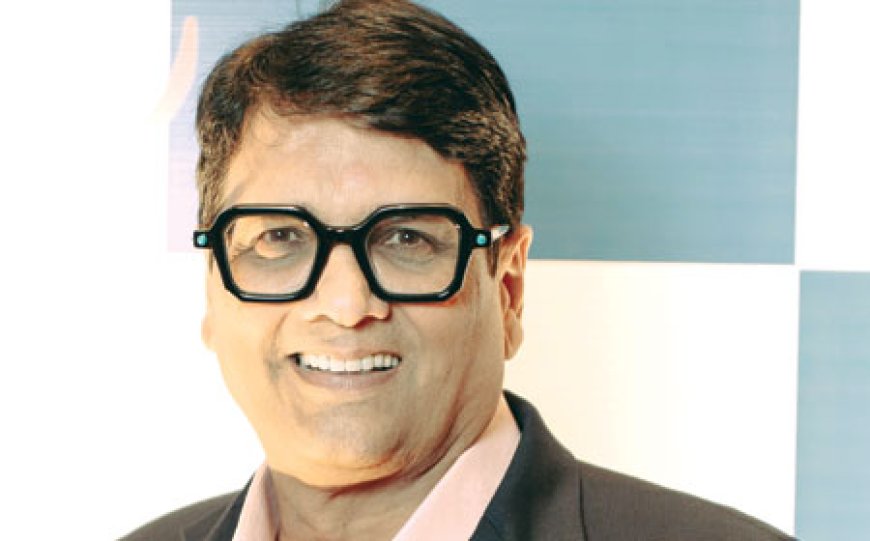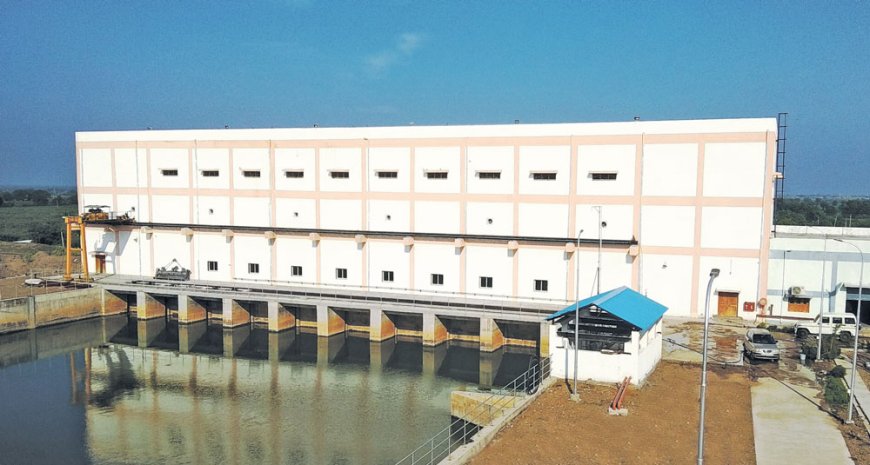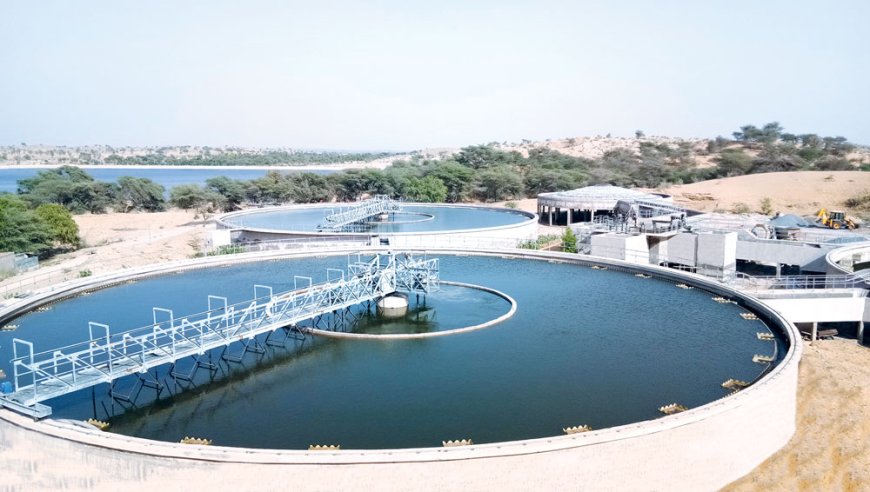Resilient infrastructure: Water-secure India

Subhash Sethi
Chairman, SPML Infra
What is your overview on water and wastewater management in India?
India's steady investments and progress in water and wastewater infrastructure development reflect its firm commitment and conviction to systematically resolve pressing water issues and modernize water distribution and wastewater treatment systems. Schemes like the Jal Jeevan Mission (JJM), Atal Mission for Rejuvenation and Urban Transformation (AMRUT), National Mission for Clean Ganga (NMCG) and others focused projects on rural and urban areas are significantly expanding access to safe, reliable and affordable tap water supply through network augmentations, treatment upgrades, metering and losses reduction.
The Indian government has allocated significant budgets towards flagship water supply schemes - the Jal Jeevan Mission (Rural) and the Jal Jeevan Mission (Urban). The JJM rural focused on providing functional tap water connections to all households in Indian villages, has been allocated Rs.3.6 lac crores for the duration of 2020-2024. Complementing this, Rs 2.87 lakh crores have been exclusively earmarked under the JJM Urban for the period of 2021-2026. The urban component will facilitate water supply infrastructure and distribution network improvements across 500 cities with the aim of ensuring regular potable water availability in all households through tap connections.
Under the National Mission for Clean Ganga, over Rs 20,000 crores have been invested since 2015 to build new sewage infrastructure and treatment capacities in towns along the River Ganga. This flagship initiative serves as a key driver for large-scale wastewater management, recycling and sustainable river rejuvenation projects across the Ganga basin states. The substantial funding support committed across rural and urban areas, alongside investments in wastewater infrastructure reflects India's undeterred policy priority and resources mobilisation towards sustainable water security and sanitation access as well as ecological restoration objectives.

What are the key developments in drinking water segments? What are your contributions to this?
India faces deep-rooted and intersecting water challenges - scarcity, contamination, variable rainfall, and inequitable distribution. To mitigate the challenges, government has taken several initiatives with dedicated funding. More households, both rural and urban, have gained access to tap water connections due to large-scale centralized schemes like JJM and AMRUT. As per government data, till February 2024, JJM Rural has provided an additional 112 million households with drinking water facilities since its launch in 2019. The interim budget of 2024 has allocated Rs 69,926 crore to Jal Jeevan Mission to facilitate the completion of scheme to connect the remaining 48.5 million rural households.
The AMRUT scheme is progressing well with a total of 2,135 approved water projects. The scheme initiated in 2015 for 500 cities and towns concentrates on infrastructure development in water supply, sewerage, septage management, storm water drainage, green spaces, parks, and non-motorised urban transport. Rainwater harvesting projects under the water supply sector and urban reforms are also part of the mission.
In the area of sustainable water management, SPML Infra is currently engaged in several water supply projects under the Jal Jeevan Mission in different states and developing water infrastructure to provide tap water connections to more than three million populations. Apart from JJM, SPML Infra is executing several other water supply projects including Saurashtra-Narmada Avtaran Irrigation Project (SAUNI Yojana) in Gujarat that envisage providing drinking water facilities to around 39 million people across 132 towns and 11,456 villages.
What are the emerging trends in wastewater management?
Wastewater management poses significant challenges across India's urban centres with substantial portions of generated sewage and effluents discharged untreated into water bodies due to infrastructure limitations. This critical situation has necessitated the exploration of unconventional solutions. The focus has shifted to decentralized treatment systems - compact, modular plants located near waste generation sources rather than large centralized facilities and expansive sewerage networks. The treated wastewater is increasingly recycled and reused for non-potable purposes like irrigation, industry or urban greens. Leveraging smart technologies including IoT sensors, automation, and remote machine analytics integrated with treatment processes optimize energy use, minimize carbon footprint, enable predictive maintenance and comply with prescribed standards. The productive reuse of treated wastewater also helps in resource recovery - generating energy via harnessing biogas, extracting fertilizer nutrients, and yielding reusable water for circular economy objectives. The public utilities are entering into partnerships with technology providers and specialized operators under hybrid business models for new project implementation. These technology-centric, localized and collaborative strategies are aligning efforts to address India's extensive wastewater treatment gap.

What are the latest technology trends in water & wastewater management?
Digital water solutions herald a pioneering strategy for tackling the complex challenges of water and wastewater management. By leveraging technology, data, and connectivity, these solutions have revolutionized water management system globally. Smart sensors enable real-time tracking of water quality, flow rates, and other key parameters, allowing for data-driven decision making and predictive maintenance. Advanced analytics and AI decode massive data sets into valuable insights on usage patterns, leak detection, distribution optimization, and infrastructure performance. Remote monitoring and control of water infrastructure via digital solutions boosts efficiency and reduces risk.
Smart metering and billing systems incorporate cutting-edge technologies for enhanced accuracy, efficiency, and sustainability in water management. Advanced leak detection locates distribution network leaks precisely by detecting acoustic and pressure anomalies. Blockchain integration enhances water usage data security and transparency, preventing tampering. Satellite imagery and remote sensing tools monitor water resources, track water level changes, and assess environmental conditions. Cloud computing enables collaborative information sharing among various stakeholders for firm decision-making and facilitates seamless access to shared resources.
As there is a lot of focus on sustainability initiatives, what are the major things happening in water sector?
Dedicated efforts are underway to fortify and optimize water systems, encompassing several strategic initiatives. Key actions involve the implementation of circular water systems that strive for 'zero liquid discharge' by emphasizing reuse and recycling, particularly within industrial sectors. There is a strong emphasis on promoting climate-smart irrigation techniques and sustainable agricultural practices to mitigate overexploitation of water resources. Technologies like low-flow fixtures and rainwater harvesting, coupled with collaborative efforts and awareness campaigns, are transforming water practices. This comprehensive approach aims to establish long-term, equitable, and environmentally conscious resource security in India, representing a commitment to sustainable water management.
How do you look at the future of water infrastructure in the country? What is your vision on water security and the way forward?
India's existing water infrastructure struggles with outdated systems, funding shortfalls, inefficient resource and distribution management, and inadequate storage. As water demand rises inevitably, the need for modern, sustainable infrastructure augmented by digital solutions has become more pressing than ever.
Building resilient and equitable infrastructure will be crucial to ensure water availability. This involves revamping surface irrigation systems to enhance conveyance efficiency and last-mile connectivity. Smart water grids using sensors, metering and automation can optimize underground water transport and reduce losses. Implementing robust water recycling systems can significantly cut demand for freshwater. Low-cost modular decentralized wastewater treatment models tailored for specific areas show promise. Rainwater harvesting and watershed development programs need scaling up. Community participation in water infrastructure building and maintenance through appropriate financial and social incentives can make the systems sustainable.
Water security has become a pressing concern and India has set ambitious goals on water security under its Jal Jeevan Mission and other schemes. Realizing these targets will see technology-enabled, climate-resilient and equitable water systems serve the needs of India's rising population in a sustainable manner.
Highlight 1
India holds about 4% of global water resources but supports nearly 18% of the world's population.
Highlight 2
Resilient infrastructural design is the key to water security in India.







